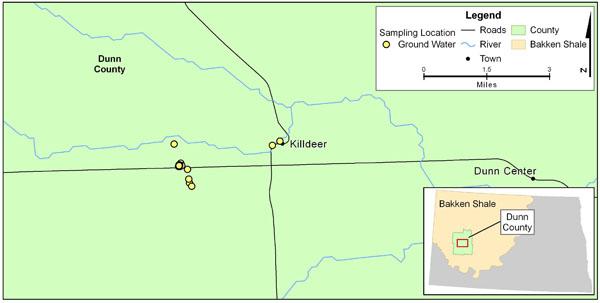Retrospective Case Study in Killdeer, North Dakota
Case Study Background
EPA conducted a retrospective case study in Killdeer, North Dakota to investigate potential impacts to drinking water after a reported blowout of a well during the hydraulic fracturing. The findings help shed light on the vulnerabilities to drinking water resources from well blowouts during hydraulic fracturing and the potential ways to help prevent impacts to drinking water resources.
- Report: Retrospective Case Study Killdeer, North Dakota (PDF)
- Fact Sheet: Killdeer, North Dakota Retrospective Case Study
Key Findings
- The domestic wells sampled did not show the presence of chemicals or brine associated with the blowout. However two monitoring wells screened in the Killdeer aquifer showed the presence of brine and tert-butyl alcohol (TBA). Based on the data analysis performed, the only potential source consistent with the TBA and brine at the two monitoring wells was the blowout during hydraulic fracturing that occurred in Killdeer, ND.
State Activities at the Case Study Location
North Dakota responded to the blowout and the site remediation is complete. No further actions are required for this site.
Sampling Activities
EPA completed three rounds of water sampling from July 2011 to October 2012. Ground water samples from the Killdeer Aquifer were collected from domestic wells, monitoring wells, one state well, one municipal well, and water supply wells.

